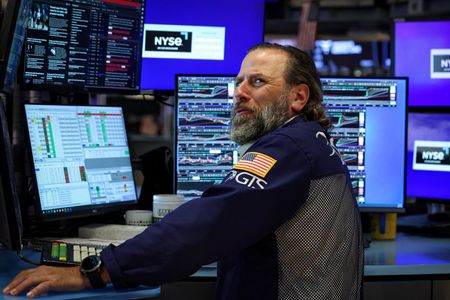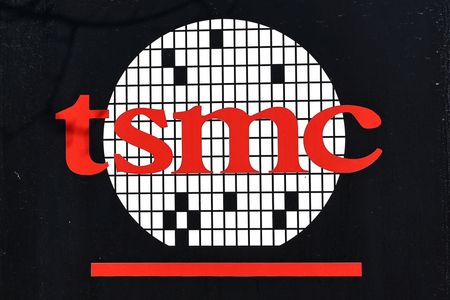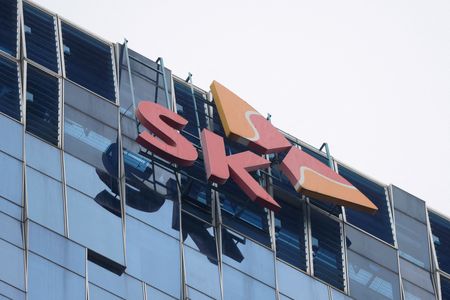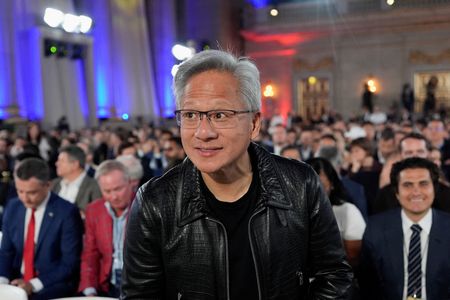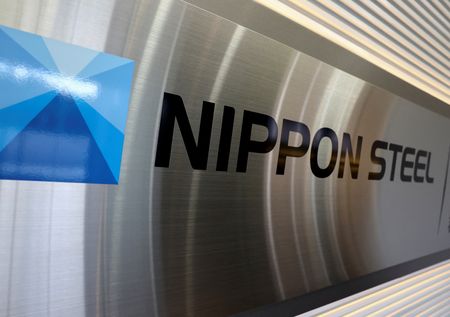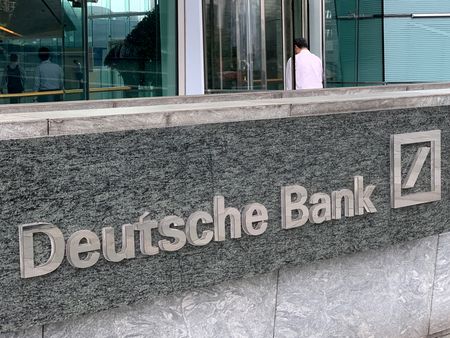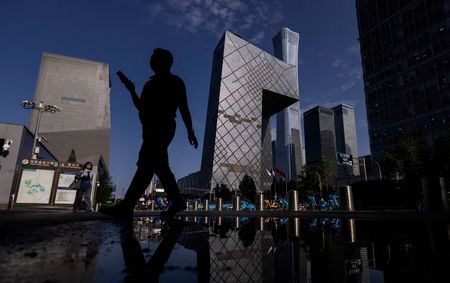By Jamie McGeever
ORLANDO, Florida (Reuters) -TRADING DAY
Making sense of the forces driving global markets
By Jamie McGeever, Markets Columnist
Wall Street rose on Thursday as investors looked favorably on tech despite a mixed reaction to Nvidia’s results, while the prospect of U.S. rate cut next month from a more dovish Fed pushed the dollar lower against nearly every major and emerging currency in the world.
More on that below. In my column today, I look at the rotation out of tech stocks and into small caps that accelerated in August, and ask whether it can continue into September.
If you have more time to read, here are a few articles I recommend to help you make sense of what happened in markets today.
1. Fed Governor Cook sues Trump over his attempt to fireher 2. Dollar drop on politicized Fed may be part of Trumpdeal: Mike Dolan 3. Nvidia CEO says AI boom far from over after tepid salesforecast 4. For bruised bond markets, turbulence persists as debtsales ramp up again 5. EU to scrap tariffs on U.S. goods to pave way for lowercar duties
Today’s Key Market Moves
* STOCKS: S&P 500 hits new high, Nasdaq outperforms.Europe, Asia, emerging markets more mixed. * SHARES/SECTORS: Nvidia slips 0.8%, but recovers fromafter-market lows overnight. Tech and communications lead U.Smarkets higher though, small caps lag. * FX: Dollar falls against nearly every currency in theworld, dollar index -0.4%. China’s offshore yuan hits 2025 high. * BONDS: Long-dated yields in Japan, France, and UK easeback from this week’s multi-year peaks. U.S. curve bullflattens, $44 billion auction of 7-year notes goes pretty well. * COMMODITIES: Copper has biggest rise in two weeks, up1.5% to a 2-week high. Nvidia, U.S. GDP help lift prices.
Today’s Talking Points:
* U.S. GDP resilience
Second-quarter U.S. GDP growth was unexpectedly revised up to an annualized 3.3% from 3.1% and PCE inflation in the quarter was revised slightly lower to 2.5% from 2.6%. On the margins, this may point to more of a ‘Goldilocks’ scenario and temper some of the ‘stagflation’ fears that continue to swirl.
Does this alter Fed expectations? Probably not – there are some key data before the September 17 decision, starting with July PCE inflation on Thursday, that will have much bigger sway. But it does show that the impact from tariffs on activity and prices hasn’t been properly felt yet.
* Big government
Contrary to what we were told on the campaign trail and led to believe with Elon Musk’s ‘DOGE’ moment in the Washington sun, the Trump administration is taking a very active role in many aspects of U.S. economic, policymaking and industrial life.
From taking stakes in big companies like Intel and others to letting Nvidia sell its H20 chips to China in exchange for 15% of those sales, and from trying to stuff the Fed board with loyalists to targeting law firms and academic institutions, the administration’s footprint seems to be expanding, not shrinking.
* Yuan steps beyond
The Chinese yuan – onshore spot and offshore – leapt to its highest level against the U.S. dollar this year, precisely since November 6, the day after the U.S. election. The PBOC’s USD/CNY fixing is on course for its biggest weekly move since September.
Beijing is clearly steering the yuan higher, not lower, as many observers predicted would be its response to the economy’s deflationary pressures and looming trade war with the U.S. Maybe Beijing is focusing more on bolstering domestic demand than exports?
U.S. small caps quietly notch historic outperformance vs tech
Amid the Federal Reserve drama and deluge of corporate earnings in August, one clear but overlooked trend emerged in U.S. equities: the rotation out of expensive tech stocks and into cheaper small caps. As the month draws to a close, the big question is whether this can continue.
The Nasdaq 100 is currently on track for a monthly gain of 1.5% while the Russell 2000 small cap index is headed for a 7.3% rise, signaling an underperformance of 580 basis points for the tech-heavy index.
According to Stuart Kaiser, head of equity trading strategy at Citi, that relative monthly performance for the Nasdaq 100 is in the bottom 5% since 1985.
And if we look at ETFs, tech’s underperformance looks even more striking. This month, the Invesco QQQ exchange-traded fund tracking the Nasdaq 100 is flat, while the iShares Russell 2000 ETF is up 7%.
FED BOOST
So what’s responsible for this dramatic divergence?
It may partly just reflect investors seeking to rebalance their concentrated and lopsided portfolios. But the split was clearly turbo-charged by Federal Reserve Chair Jerome Powell’s Jackson Hole speech on August 22, when he opened the door to an interest rate cut next month.
Manish Kabra, head of U.S. equity strategy at Societe Generale, says the Russell 2000 index’s outperformance against the broader S&P 500 that day was the biggest since the U.S. election on November 6 last year that returned Donald Trump to the White House.
Powell’s dovish pivot is helping small caps outperform because these companies tend to benefit more from lower interest rates given that they rely on borrowing to grow and expand. Larger firms, especially ‘Big Tech’ megacaps, often have huge cash reserves and easier access to other sources of financing.
To be sure, lower rates wouldn’t just be good news for small caps. The rising tide of liquidity and investor sentiment would typically be expected to lift all boats, including the ‘Magnificent Seven’ megaships.
As analysts at UBS point out, past equity bubbles have often been burst by rising interest rates, so a resumption of the central bank’s easing cycle would appear to minimize that particular risk for high-priced tech stocks.
But, regardless, small caps may still continue to get more of a Fed boost in the near term.
AI DOUBTS
Another catalyst for the rotation has been creeping doubts about AI’s ability to deliver returns commensurate with the bubble-like frenzy surrounding the new technology.
Tech stocks remain on the pricey side. That’s justified, argue UBS analysts, by the potential revenue from AI-generated efficiencies, which they estimate could reach around $1.5 trillion a year globally.
Others are less optimistic. If value creation on this massive scale fails to materialize, then tech companies will struggle to generate a return on the trillions of dollars of global capex expected in the coming years.
That’s why all eyes were on $4.4 trillion Nvidia’s earnings on Wednesday. How investors interpret the global AI leader’s results will help determine whether tech’s underperformance continues into September. The company’s revenue, profit and forecasts looked solid, but uncertainty surrounding the suspension of its business with China and skepticism around the revenue outlook are giving investors pause.
UNDER THE RADAR
For now, market momentum remains with smaller firms. Francis Gannon, co-CIO and managing director at Royce Investment Partners, calls it a “stealth summer” for small caps, the recent outperformance of which has gone “mostly unnoticed” amid the daily headlines centered on economic uncertainty, geopolitical worries, and new highs in the larger cap-led indices.
Indeed, the Russell 2000 has yet to revisit last November’s peak, while the Nasdaq and S&P 500 have been printing new highs for weeks.
Whether or not small caps start hitting new records will likely be determined by what happens at the Fed.
So the big macroeconomic events to watch next month will be the August employment report due on September 5, August CPI inflation data on September 11, and then, of course, the Fed’s policy decision on September 17.
Small caps have enjoyed a pleasant end to the summer. Let’s see what happens when investors all get back to their desks next month.
What could move markets tomorrow?
* China corporate earnings, including Alibaba, BYD, CITIC,China Construction Bank, ICBC, Bank of China * Japan retail sales, unemployment, industrial production(July) * Japan Tokyo inflation (August) * India GDP (Q2) * Germany retail sales (July) * Germany inflation (August, prelim) * ECB board member Luis de Guindos speaks * Canada GDP (Q2) * U.S. PCE inflation (July) * U.S. Chicago PMI (August)
Want to receive Trading Day in your inbox every weekday morning? Sign up for my newsletter here.
Opinions expressed are those of the author. They do not reflect the views of Reuters News, which, under the Trust Principles, is committed to integrity, independence, and freedom from bias.
(By Jamie McGeever; Editing by Nia Williams)

